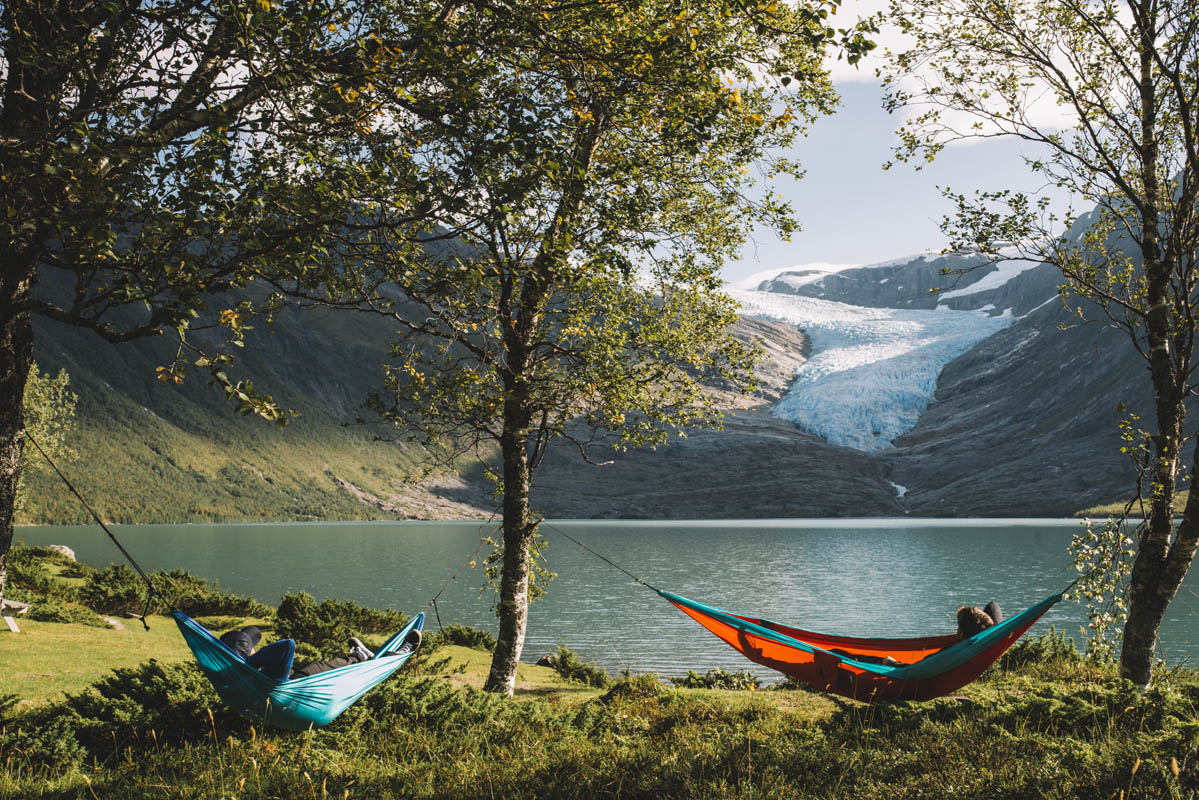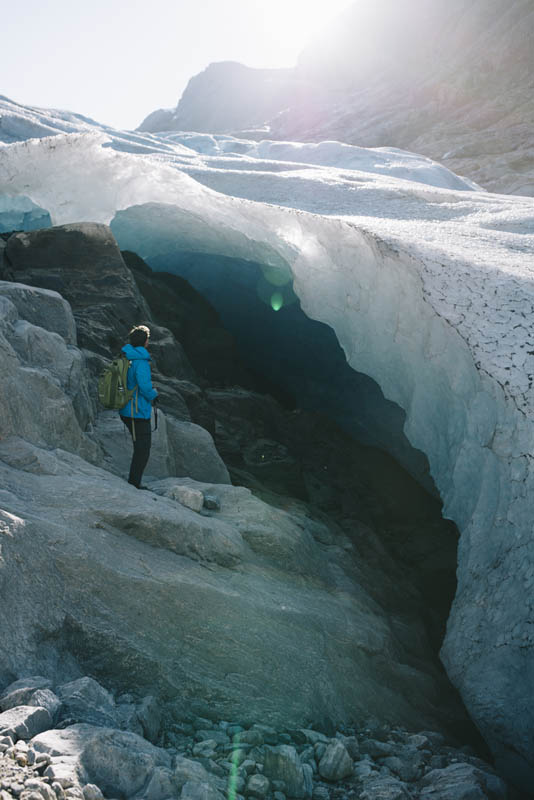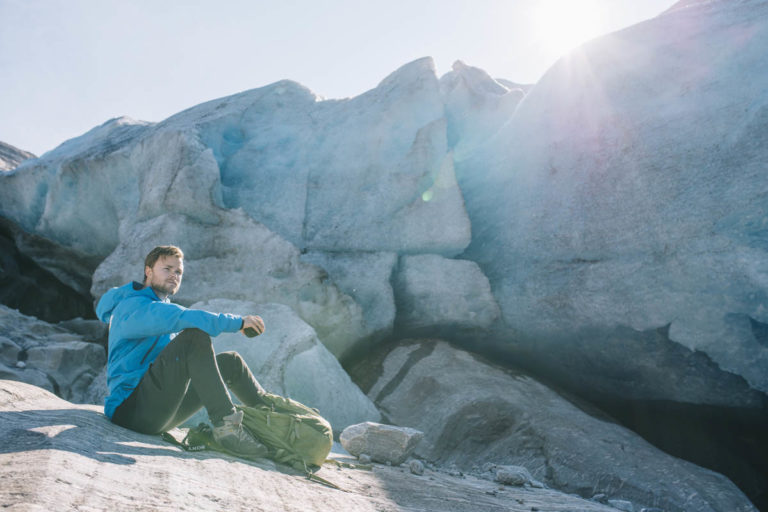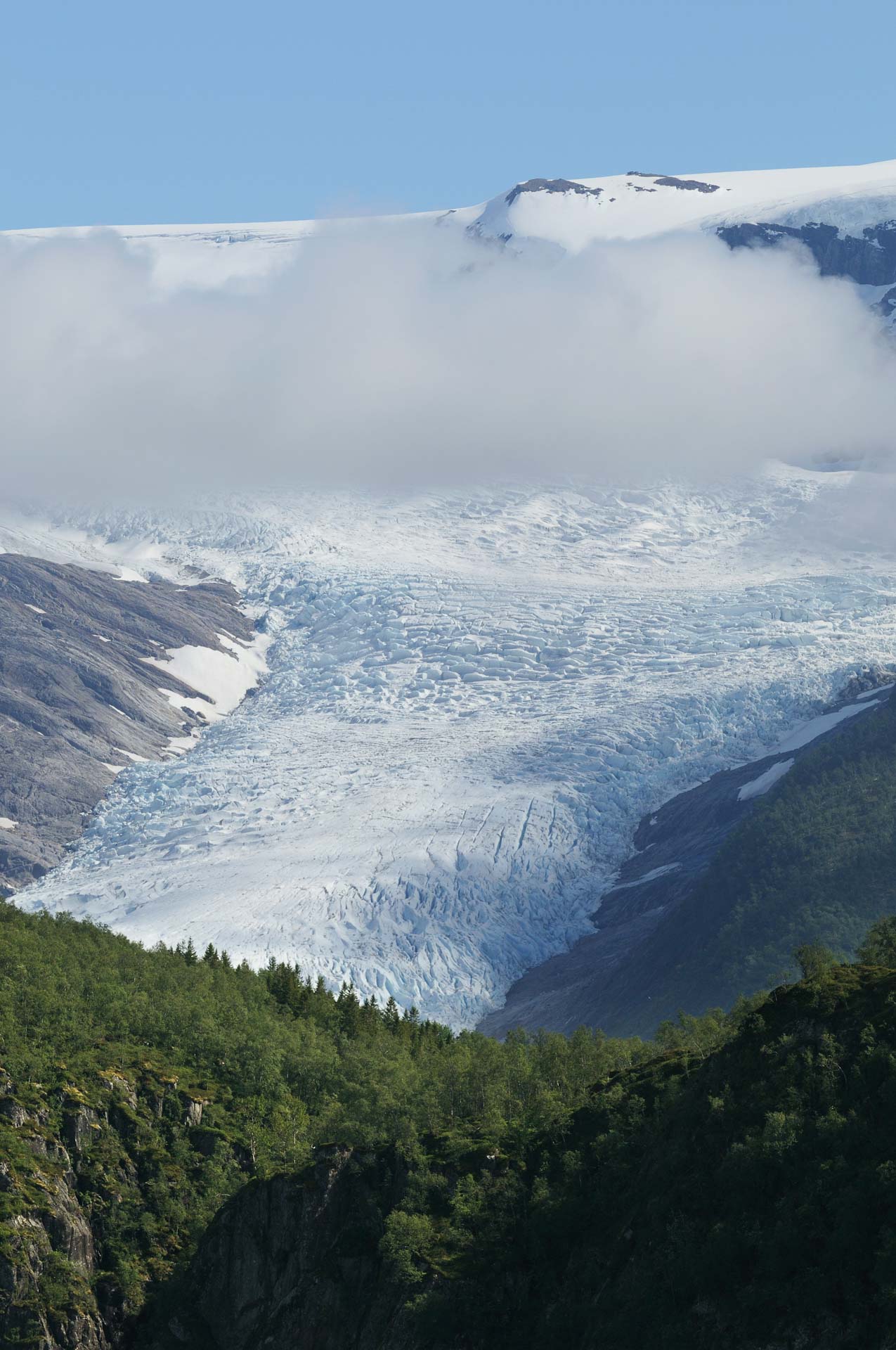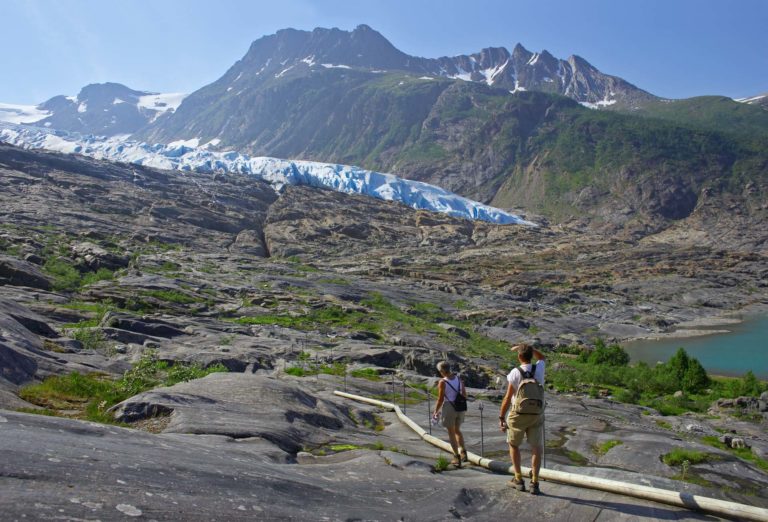If you want a challenge, albeit within safe limits, we recommend a trip to the Engenbreen glacier, from where you can look down at the green water of Holandsfjord and up at Helgelandsbukken’s impressive 1,454 metres (4,770 feet). Try a glacier walk on Svartisen.
A glacier is a distinctive world. The ice forms summits and ridges, with deep crevasses in between, and the whole thing is a deep blue colour. Engenbreen in Holandsfjord is spectacularly beautiful, between the sharp peaks of the Saltfjell-Svartisen range and the Holandsfjord. This glacier ice tongue is part of Svartisen, Norway’s second biggest glacier, and is the glacier that gets closest to sea level in all of mainland Europe. Since it is so easy to get to, and is in such a beautiful landscape, it is one of the most popular glaciers for glacier hikes.
Prepare to be roped together for the ascent
Essential safety equipment for glacier hikes are crampons on your feet, a climbing harness, ice axe and helmet. Everyone then gets roped together. The guide goes in front, and there are a maximum of nine people to one guide. When everyone is tied in, the team moves forward. Engenbreen is quite a steep glacier, so there is a lot of uphill work. However, the glacier guide chooses a route that is generally no steeper than 40 degrees, even if there might be a few steeper sections to be negotiated. On these sections you use your ice axe for balance, but you never have to use it to pull yourself up. Occasionally the guide will put in an ice screw and fasten a carabiner to the rope, at which point every person climbs up to the ice screw, unclips the carabiner in front of them and clips it back on behind. The next person then ascends.
Most can take part in the guided hikes
Most people are able to do a glacier hike. You need to have full mobility in your arms and legs and have normal balance. There is a lower age limit of 12, since glacier hikes require concentration and an ability to understand instructions. Naturally, fitness is an advantage. However, the half hour it takes to get to the glacier is enough to give the guide a good impression of the group’s fitness level and decide on the route forward.
Ice climbing is also an option
A variation on glacier hiking is to climb an ice wall. This involves fastening a rope to the top of a steep ice wall. One guide then stands at the bottom to act as the belayer, and then the climber starts up the ice wall. If the climber loses their grip, they will be left dangling, and can abseil back down. This might sound scary, but it is something that most people with full mobility can manage.
Always take a guide with you and follow their instructions
At a general level, visitors don’t need to worry about safety, as long as they follow all the instructions. The glacier guides have extensive experience and have been thoroughly trained in glaciers and glacier hiking, and are responsible for selecting the correct route. You will never be asked to walk on a ridge between two crevasses. Sometimes Engenbreen calves, which means that large chunks of ice sweep down the glacier front. However, experienced glacier guides are able to predict when this will happen. Rocks’n Rivers have never had any significant accidents or injuries.
Organised hikes are only possible in the Summer and Autumn
The Rocks’n Rivers company offers glacier hikes throughout the summer season, until the first snowfall. You need to supply your own hiking boots, warm clothing, waterproof jacket, sunglasses and sun cream, but Rocks’n Rivers provides all other essential glacier equipment. The trip takes about five hours, including a half hour walk each way to the edge of the glacier, a briefing and two or three hours’ effective hiking time. www.rocksnrivers.no is their website, where you can find up-to-date information. Alternatively you can talk to Nordland Turselskap for glacier hikes.

Visit Bodø
Visit Bodø informs about the municipality of Meløy
